Bolivia - Part 1 of 2: La Paz, Aymara Reed Boats on Lake Titicaca and Enigmatic Tiwanaku
In the first leg of our trip across Bolivia, we visited the capital city of La Paz, a village of the ancient Aymara people on the shore of lake Titicaca, and the legendary Tiwanaku archaeological complex in which Puma Punku was made famous by the Ancient Aliens documentary series.
Here is a map summarizing this part of our Bolivia trip.
December 26, 2022
06:13 AM
After our unforgettable three days of exploration of Peru, we were supposed to take the PeruRail Titicaca train from Cusco to Puno in Peru, and then a Bolivia Hop bus to cross the border into Bolivia and get to La Paz. Due to unfortunate violent political unrest in Peru, both PeruRail and Bolivia Hop had suspended operations. We had to urgently fall back on a LATAM flight out of Cusco to Lima, Peru and then two Boliviana de Aviación (BoA) flights from Lima to La Paz via Santa Cruz, Bolivia.
The exit passport and immigration control at Aeropuerto Internacional Jorge Chávez de Lima was normal. We just had to retrieve our luggage at the domestic terminal, walk out the doors on to the street in a balmy Lima at 81 degrees fahrenheit, and then walk back in through a not-very-clearly marked doors of the international terminal at the other end of the same airport building.
Our entry customs, immigration and passport control for Bolivia was at Santa Cruz Viru Viru International Airport. The experience here was interesting.
We were questioned on arrival at Viru Viru about being COVID-19 vaccinated (but they did not ask to see our CDC cards) and had to put our masks on since Bolivia still requires masks in public places. With little signage around and that too only in Spanish, we first stood in a winding slow-moving queue, the wrong one as it turned out when we reached the counter as there was a different queue for folks with American passports wanting visas-on-arrival by paying $160 per person. So we switched queues and eventually reached one of the two correct counters. The lady officer looked at our documentation - itinerary in Bolivia, hotel and travel reservations, invitation letter from Pukina Travel, bank statements etc., and shook her head. With a combination of listening carefully and google translate on the phone (I had Spanish downloaded for offline use), we realized she was unhappy about not seeing us having airline or bus tickets out of Bolivia. An hour and a half long period of distress ensued while we tried to explain we were not flying out or taking a bus to Peru from Bolivia, but crossing into Chile over the Hito Cajón mountain border pass. To our great relief, a managerial Bolivian officer got involved speaking excellent English. This kind gentleman saved the day; he understood what we were trying to communicate and instructed the officer at the counter to process our visas based on our airline tickets out of Chile.
We were not over the hump yet. Having had no idea credit cards were accepted at the point of immigration in Bolivia, we handed over $640 in cash for visas for the four of us. The officer examined every bill carefully, folding each bill various ways and examining intently for legitimate tender. I was unaware of security features in US$ bills but learned a few that day. Three of the six $100 bills failed the test and were returned to us for unknown reasons. We had ready replacements, and after having replaced a couple of the replacements twice, we achieved paying visa fees in acceptable bills.
The Bolivian visa is no joke, it is not as simple as an entry stamp. The officer generated actual full-page visas that were then glued to pages of our passports and plastic protective films removed from their tops.
In the meanwhile, we could see our luggage joyriding the carousel behind the immigration hall. Eventually we saw the carousel stop, a BoA employee arrive with a cart, put our luggage on the cart and start to walk away. Standing in front of the cash-for-visa counter, we screamed and waived at that BoA employee who then pushed the cart behind the immigration counters and left it there.
Now that we had visas, we had to go back to the original queue for getting entry stamps on our passports. The officer at the passport-stamping counter looked at our fresh visas and started questioning us again in fluent Spanish. Once again, the English-speaking senior officer saw us struggling and helped us out by shouting from across the big immigration hall - something like "they are good for Salar de Uyuni, it is okay". We got our entry stamps and a "Welcome to Bolivia".
It took two hours, but we were finally officially inside the Estado Plurinacional de Bolivia (Plurinational State of Bolivia)!
Bolivia is to the south-east of Peru but Bolivian standard time is an hour ahead of Peru which keeps the same time as US Eastern Standard. This is a bit surprising because Bolivia is straight south from eastern USA, not really far enough east to get ahead by an hour on the clock.
BoA flight OB961 scheduled for 06:00 AM took off from Santa Cruz Viru Viru for La Paz El Alto a bit late while a few more connecting passengers like us made their way from immigration.
Amazingly, our Economy class baggage allowance for Cusco to La Paz across all hops was "3 pieces per person, 23 kg each". In theory, the four of us could have checked in 12 big luggage pieces of 50 lb each for free! But over the years we had learned to travel light and had only one suitcase to check in, though we took this opportunity to check in our four carry-ons as well.
Unfortunately, some random stuff like Lysol spray and an aerosol shaving cream were confiscated for being fire hazards. The way this confiscation works is the PA system announces your name, you go up to the little desk at the gate from where you are escorted by people looking like military police to a room in the back where your suitcase is opened and things flagged by x-ray taken out and discarded under your watch. It is a more humane experience than the TSA card we sometimes find after flights in the States.
La Paz, Bolivia (16.5° S, 68° W, altitude 13,250 feet)

La Paz and El Alto during final approach of Boliviana de Aviación flight OB961 from Santa Cruz
Along with the neighboring town of El Alto up on a plateau, La Paz is easily one of the most breathtaking cities we have experienced, and not just due to thin air at their altitude.
La Paz, a city which literally translates to "Peace", is the world's highest capital. The 13,325 foot high Aeropuerto Internacional El Alto was also the world's highest commercial airport till very recently when the Chinese opened the 14,472 feet high Daocheng Yading on the top of Haizi Mountain in Tibet.
Straddling and nestling in the valley of the La Paz (also known as the Choqueyapu) river, Bolivia's second most populous city with 750,000 residents is barely 1,400 feet lower than the Andean Altiplano.
Towering snow-capped mountains and glaciers of the Cordillera Real range of the Andes surrounds the city. The 21,004 foot Nevado Illimani stands watch over it from the south and the 19,974 foot Huayna Potosí looms on the north.
There used to be an Inca settlement at the location of La Paz when Spanish marauders invaded in mid-16th century. It was demolished and the Spaniards established a town there named Nuestra Señora de La Paz (Our Lady of Peace) governed under the viceroyalty of Peru. Incredible amount of wealth, especially in the form of silver which was valued in the Andes more than gold, was looted by Spain. The city was renamed in 1825 to La Paz de Ayacucho in remembrance of the last of Bolivia's wars of independence. (Ref: Britannica)
We landed at El Alto just before 8'o clock and picked our luggage up.
The main hall of El Alto airport has excellent cafes, mobile phone vendors and ATMs.
There are a bunch of ATMs in a room tucked away in the rear left corner of the main hall. It can be reached by walking past the stairs and making a left at the wall behind the stairs. I had no problem withdrawing some Boliviano from a machine there.
We had been told that ENTEL (Empresa Nacional de Telecomunicaciones S.A.) are the oldest mobile service provider with best coverage across the vast rugged topography of Bolivia. There is an ENTEL mobile store to the left of the large café. They accept only cash and as usual with Bolivia are rigorous with documentation. I presented our passports and boarding passes and was rewarded with activated SIMs in our phones along with sheafs of legal and contractual papers. The plan that we purchased was 4.8 GB data including unlimited WhatsApp for 7 days for Bs.40 ($5.79).
After coffee and cakes at the airport café, we stepped outside to meet a group of taxi drivers. Acting on prior advice, we made sure the taxi we were renting had the white-on-blue "AEROPUERTO" signage painted on it. We just provided the driver with the name of our hotel (Hotel Madrid), and off we went for a 30-min ride.
We started off heading towards Autopista Héroes de la Guerra del Chaco (Route 3) toll road towards La Paz.
Just before the toll plaza, we had a first look at a ropeway of Mi Teleférico (Teleférico La Paz - El Alto) cable-car public transit system. The La Paz Cable Car system has 10 lines connecting the entire city over ropeways, with El Alto connected over the Blue Line.
The toll plaza at El Alto entrance to Autopista Héroes del Chaco expressway looks much like any in the world, though I am not sure if automatic vehicle detection and classification or automatic vehicle identification (transponder-based) systems are in use. Vias Bolivia is the public road specification and toll collection authority. ABC (Administradora Boliviana de Carreteras) administers Bolivian highways.
On the way to downtown La Paz, we get the first panoramic views of El Alto and La Paz valley.
I had selected Hotel Madrid because of its location just one block from Plaza Murillo. Sure enough, we drove across Calle Bolivar on the way there with the imposing Asamblea Legislativa Plurinacional (Bolivian Congress) building on the right and Plaza Murillo on the left.
Driving up one more block along C. Bolivar and taking a left on Indaburo gets us to our hotel.
The official cab fare from El Alto airport to any downtown La Paz hotel is fixed by the administration at Bs.80. On reaching the hotel, I handed the cabbie Bs.100 in cash and waved for him to keep the change. He smiled and left and that was it. At no time before or during the cab ride was there a conversation about the fare or an uncomfortable need to negotiate.
Hotel Madrid is located one block from Plaza Murillo. We had a great view of the plaza and surrounding buildings from our 5th floor room.
Given its proximity, we would find ourselves in Plaza Murillo quite a few times over our stay in La Paz.
Lake Titicaca and Sanca Jahuira (Huatajata): A Cruise on a Aymara Reed Boat
15,420 feet up on the Andes altiplano, Titicaca is the largest freshwater lake in South America and the world's highest commercially navigable lake (Ref: Wikipedia).
The indigenous Aymara people of Bolivia and Peru have been living around lake Titicaca building reed boats since ancient times. The boats are built of Totora reeds and are capable of sailing across oceans, though the Aymara use them for fishing and ceremonies like December 21 Summer Solstice on lake Titicaca. They tie Totora reeds with braided twine to build these boats. People of the Andes ceremonially mark summer solstice in the southern hemisphere. It is a key date in Aymara cosmology.
Similar reed boats have sailed from Morocco to Barbados Islands in the Caribbean, from Peru to Polynesian islands, from Chile to Easter Island and from Egypt to Lebanon and Cyprus (Ref: phys.org).
In the afternoon we visited a small Aymara village called Sanca Jahuira on the shore of lake Titicaca close to the popular town of Huatajata in Omasuyos province. The village is a couple of hours away from La Paz by road.
There is a little crafts and history museum in Sanca Jahuira where local Aymara women demonstrate the art of weaving garments using Alpaca wool. Some authentic hand-make garments along with other handicrafts are also available for purchase. I purchased an Alpaca wool poncho and a Bolivian-style woolen hat with ear flaps to go with it. The poncho itself has a hood that covers the head.
The captain of a reed boat welcomed us heartily and took us for a cruise around lake Titicaca. The reed boat was proudly flying the Bolivian national flag along with the official Bolivan southern Qullasuyu Wiphala flag. The colorful flag represents some of the indigenous Andean tribes across modern Peru, Bolivia, Chile, Ecuador, Argentina and Colombia (Ref: Wikipedia).
He pointed at a distance where lake Titicaca rolls over the horizon and told us somewhere out there is the international border with Peru.
We returned to the dock at Sanca Jahuira and enquired if there is any coffee for purchase at some place near by. Everything around seemed to be closed, but the captain said his sister-in-law can make coffee at home and asked us to wait in the floating restaurant moored to the dock. We sat down in comfortable chairs around one of the tables in the empty and closed restaurant. After what seemed to be an inordinately long time for making coffee, we were served not only excellent coffee but some fabulous cookies to go with it.
In a remarkable experience with Andean hospitality, it turned out they had nothing to offer alongside coffee, and so they had gone out to the next town to get cookies just for us!
They wouldn't take any money either. I had to put my foot down to insist covering the cost of the cookies at least.
It always amazes me how the most humane gestures come from folks with not much means but supersized hearts and unlimited courtesy for the traveler and the guest.
And the Bolivian version of Orioles were fabulous enough for us to bring some back home!
The Chinese Automobiles of Bolivia
I am reasonably familiar with brand logos of automobiles. But on the roads of Bolivia, I was having trouble with a great number of mysterious brands, logos and vehicle models.
It turns out Chinese auto makers operate in a big way in Bolivia offering vehicles very cheap and that too with financing plans that forego credit checks and such with lucrative low down payments and instalments. These car makers have flooded the country while the few who have the means stand out by driving authentic imports. Private car ownership is rare in Bolivia and the market for contraband cars called "chutos" is huge, according to reports (Ref: The Guardian).
I took pictures of a few alien vehicles in El Alto - La Paz on our way back to the hotel from lake Titicaca. Among them:
- Foton View C2 Supporter
- Jupiter MSOS
- King Long Kingwin
- King Long Super GLS
- JAC JS3
- FAW ACTIS
- Keyton V60
December 27, 2022
Plaza Murillo, La Paz
I rose early, gulped down some Coca Tea at the lobby and headed to Plaza Murillo, a five-minute walk from the hotel.
Plaza Murillo, the central square of La Paz, is named after Don Pedro Domingo Murillo, revered leader of Bolivia's struggle for independence from Spain. Murillo was captured and hanged by Spanish troops in January of 1810 in the plaza. A monument (Monumento a Pedro Domingo Murillo) in the center of the beautiful pigeon-filled square commemorates the great freedom fighter.
The Palacio de Gobierno (Government Palace, popularly called the Presidential Palace or Palacio Quemado) and Catedral Metropolitana Basílica Nuestra Señora de La Paz (Cathedral Basilica of Our Lady of Peace) are located next to each other at south-west of the plaza. The Asamblea Legislativa Plurinacional (Plurinational Legislative Assembly previously called the National Congress of Bolivia) building is on the south-east. The Museo Nacional de Arte (National Art Museum) is at the western corner of the plaza.
The Presidential Palace was burned in an uprising in 1875 giving it the colloquial name Palacio Quemado (burnt palace).
 |
Asamblea Legislativa Plurinacional |
The plaza was adorned with the national Christmas tree and decor during our visit over the holidays.
The Backwards Moving Anti-Clockwise Clock
The Legislative Assembly / National Congress building features a large unusual clock that has its hands moving anti-clockwise. The numbers reflect the direction of the movement; 1 o'clock appears to the left of 12 o'clock and the numbers progress left to right with 11 o'clock to the right of 12 o'clock.
After inauguration of the strange clock in 2014, Bolivia's Foreign Minister David Choquehuanca proudly announced it to be "The Clock of the South’ (Ref: theculturetrip.com). This makes sense because clock makers have traditionally based the direction of movement on that of the shadow of the sundial, and the sun's shadow moves anti-clockwise in the southern hemisphere. Other theories for the backwards-moving clock include being a symbol of Bolivia's distaste for Western European culture. Mr. Choquehuanca also said in a press release, "Who said that clocks must turn the other way? Why should we always be obedient? Why can't we be creative?"
Flag Hoisting Ceremony
I reached Plaza Murillo in time for the flag raising ceremony by Colorados de Bolivia - the Bolivian Presidential Guard (El Regimiento de infantería RI-1 Colorados de Bolivia) who are responsible for safety and security of the President of the Plurinational State of Bolivia as well as the Presidential Palace and National Congress buildings.
For some reason, the minute hand of the backwards-moving clock was five minutes away from the 7 o'clock hour when the clock started to chime the Big-Ben tune. I was a bit surprised on hearing the Big-Ben chime. After all the purpose of the clock is to be different, isn't it?
We would return the next evening to a rainy but lit-up festive Plaza Murillo.
December 27, 2022
Tiahuanaco (Tiwanaku) and Puma Punku
"Any sufficiently advanced technology is indistinguishable from magic" - Arthur C. Clarke
I have had my fair share of looking at ancient man-made objects - Pantheon, Ayasofya, Acropolis, Stonehenge, Machu Picchu, Taj Mahal, Saint Peter's Basilica et cetera. But nowhere did I get goosebumps like I got at Tiwanaku.
As you purchase tickets and go through the entrance walking on the pathway leading to the site, the first things that strikes you is the geometric precision of work on solid hard volcanic andesite rock across the expanse of the 1.5 square miles of Tiwanaku currently excavated. Even from a distance, all lines are sharp, all circles are precise and all angles are perfect 90 degrees with razor-sharp edges.
Then you get closer and start examining polished andesite stone objects much taller and wider than you, and your mind goes "mathematics", followed by "200 BC!" As I tell people who ask me what I think about Tiwanaku, I stood there and walked around with a feeling of incredulity.
However, there is some promising news recently. Researchers are increasingly gaining confidence on finally solving the basic problem with Tiwanaku / Puma Punku, stated succinctly by researches: "four giant red sandstone terraces weighing between 130 and 180 tons and small blocks of andesite, an extremely hard volcanic stone, whose complex shapes (the H-blocks) and millimetric precision are incompatible with the technology of the time. And for good reason, since archaeology tells us that the Tiwanakans had only stone tools and no metal hard enough to carve the rock. But they would have carved the gigantic blocks of red sandstone (these ancient blocks are the largest of all the American continent!) and they were able to carry these hundreds of tons to the site, then to adjust them precisely. Also, they would have been able to carve the “H” blocks made of volcanic andesite, an extremely difficult-to-carve stone with an incredible finish perfectly flat faces at exact 90° interior and exterior right angles! Archaeologists cannot give any rational explanations on how this was possible. Archaeologists cannot give any rational explanations on how this was possible. Therefore, for the general public, the assumptions generally advanced to explain these wonders are the achievement by a lost ancient super civilization or by aliens’ involvement."
The research paper that I quote from then provides a solution that is causing excitement in current archeological circles. The abstract reads: "The studies carried out in 2017-2018 on the monumental stones constituting the Pumapunku site in Bolivia (South America) provided evidence that the stones are ancient artificial geopolymers (Parts I to III). To make geopolymer andesite stone, around AD 600 to AD 700, the builders could have transported an andesite stony material having the consistence of sand from the Cerro Khapia volcano site, and added an organo-mineral geopolymer binder manufactured with local biomass ingredients. They did not use the many quadrangular volcanic blocks, the famous "piedras cansadas”, the tired stones, which are still lying on both sides of the lake Titicaca. The present paper describes how the builders of Pumapunku / Tiwanaku exploited a natural volcanic andesite sand from the volcano Cerro Khapia, transported and stored it at the shore village of Iwawe, Stratum (V) in the excavation by Isbell & Burkholder, (2002). For the making of their andesite geopolymer monuments, they did not need to crush andesite rock. This andesite sand is similar to one of the pozzolana sands found in the best ancient Roman mortars and coined in Latin “carbunculus”, 2000 years ago."
Here is a link to the research paper: "Ancient geopolymers in South-American Monuments, Part IV(*): use of natural andesite volcanic sand (not crushed). Joseph Davidovits and Frédéric Davidovits Geopolymer Institute, 02100 Saint-Quentin, France."
Bienvenidos A Tiwanaku
Probably due to destruction unleashed by the COVID-19 pandemic, Tiwanaku was eerily empty of visitors. The restaurants and gift stores at the deserted entrance were closed. The archeological site ticket counter was fortunately open.
The Tiwanaku complex lies in lake Titicaca's southern basin close to the coast and 12,697 feet up on the Andean altiplano. The road to Tiwanaku leads to an abandoned Tiahuanaco train station with the site entrance ticket counter next to it. There seems to be a El Alto - Tiahuanaco - Guaqui tourist train but that stops at a different station.
Tiwanaku was the highest state capital of the ancient world as La Paz is of the current world. The sign at the old Tiahuanaco rail station mentions an altitude of 3,870 meters (12,697 feet) which makes Tiwanaku 1,440 meters (4,724 feet) higher than Machu Picchu. Tiwanaku also predates Machu Picchu by over at least 2,100 years.
Tiwanaku Archeological Site Overview
According to a UNESCO report, a drone study revealed vast swaths of unexplored ruins at the Tiwanaku / Pumapunku complexes covering over 2.3 square miles. Only about 1.5 square miles has been excavated so far.
Tiwanaku had widespread influence. Multiple temples and at least one entire city complex have been found submerged under the water of lake Titicaca (Ref: BBC, Meditation Retreat Peru). Some say the baffling Wall of the Six Monoliths in far away Ollantaytambo, Peru Inca ruins is actually a Tiwanaku construction.
The current excavation of Tiahuanaco archeological site and the recommended route to tour it in order of the great map right after the entrance to the complex:
- Pyramid of Akapana
- Kantatallita (Light of Dawn)
- Semi-Subterranean Temple
- Piedras Cansadas (Tired Stones)
- Estela Descabezado (Headless Monolith)
- Puerta del Sol (Gate of the Sun)
- Templo de Kalasasaya (Temple of the Standing Stones)
- Cuartos Ceremoniales (Ceremonial Rooms)
- Estela Ponce (Ponce Monolith)
- Estela Fraile (Friar Monolith)
- Templo Putuni (Putuni Temple Complex)
- Chunchukala (Balcony Wall)
- Puerta de la Luna (Gate of the Moon)
- Kerikala (Fire Stones)
- Pyramid of Pumapunku
According to the chronological chart also posted at the site, Chunchukala is the oldest part of the excavation, dating back to c.750 BCE when the Chiripa civilization was declining. Kantatallita was next, constructed c.200 CE, followed by Semi-Subterranean Temple c.300 CE. Kalasasaya was constructed c.400 CE, Pyramid of Akapana c.550 CE, Pyramid of Puma Punku c.700 CE, and Putuni Temple c.900 CE.
Tiwanaku was not an empire in the conventional sense, rather a multi-cultural network of powerful lineages that brought people together to build large monuments. Supported by large-scale agriculture, Tiwanaku is believed to have had a peak population of 10,000 to 20,000 people (Ref: Wikipedia).
Outside the core location of southern Titicaca lake basin, the influence of the Tiwanaku people ranged from Peru's Pacific coast to northern Chile where Tiwanaku cemeteries have been found.
We see the first examples of stone workmanship as we head to the Pyramid of Akapana.
Pyramid of Akapana
It looks like a natural mound today but in mid-7th century CE it was a magnificent stepped pyramid. Measuring 840 feet by 630 feet at base and 55 feet tall. The mound was man-made using soil and then encased in a perfect east-west axis in stepped walls of massive megalithic sculpted andesite blocks with columns and a T-shaped flat top featuring carved stones laid out in typical timeless Andean Chakana shape around a sunken platform that had stairs leading down to it. The perfect east-west alignment is also seen in the later Puma Punku pyramid quite a distance away.
Some of the walls and columns survive at the base today, as do a few of the polished sculpted stones at the top, some of them slipping down the sides. The site has been looted for ages and stones appropriated for a wide range of purposed including building churches and for use as sleepers for rail tracks.
The biggest stone piece used in the construction of Akapana has been weighed at a gargantuan 67 tons. The processes used for sculpting and drilling solid andesite rock, transporting and installing them with such precision remain a field of research.
Also for reasons unknown, late Tiwanaku construction projects like the Akapana used material from demolished prior gargantuan structures in the flourishing civilization. As Akapana came up, smaller homes around it were also torn down for building large square compounds, also with material from older structures.
Numerous stone sculptures of human and puma heads were found on the pyramid, though the exact purpose of the pyramid remains lost in time.
Strangely, the entire city would be abandoned within 300 years of Akapana, leaving behind unfinished stones and construction sites. (Ref: The Akapana Pyramid Mound).
Some of the monoliths still stand at the edges of the top of Akapana.

As we climb down from the top of Akapana, more of the steps and precision construction techniques of the pyramid come into view, along with pieces thrown around. We then leave Akapana and proceed on the path towards Kantatallita.
Kantatallita - Light of Dawn
Kantatallita is a large open rectangular temple with carved monoliths. There is an unusual sculpted square 20-ton andesite rock block inside that looks like a miniature model of a temple with stairs and a sunken courtyard. In the model, to the east (left in the first picture below), there are two little stairs on the side going down to the courtyard in the middle. On the west side of the courtyard, there are three more little stairs leading up to a platform with two rows of three square holes. Monoliths or some artefacts are thought to be attached to the square holes. (Ref: magicalandes.com)
Also inside the Kantatallita temple site is an arch (or a frieze) on the ground that is usually seen on the top of gates. Six brilliant sculpted figures on it demonstrate the Tiwanaku stone artisans' amazing abilities. It was plated with gold with just the nail holes remaining now.
Also scattered around Kantatallita are other various blocks with intricate sculpture.
On the pathway to Kantatallita there are these two remarkably sculpted monoliths showing the level of precision of Tiwanaku stonecraft.
Exiting Kantatallita on our way to the Semi-Subterranean Temple, we notice this large piece. There are three holes drilled right through and a beginning cut of sculpting. Did the Tiwanaku use rope through the holes to transport such blocks?
Semi-Subterranean Temple
Something happens to you when you enter the templete Semisubterráneo. You get goosebumps thinking dark and sinister things happened here. A purely personal perception, perhaps this was a happy place. But the huge courtyard 6.5 feet below ground level - deeper than I am tall - surrounded by walls of red sandstone blocks and columns in contrast to grey andesite of prior monuments, and especially the menacing tenoned whitish heads made of limestone and ignimbrite sticking out of the red walls - the sense of foreboding was unmistakable. The gigantic walls of Templo de Kalasasaya next to it with its gate framing the Monolito Ponce with geometric precision looms over it.
It is thought the semi-subterranean temple is a monument to the Tiwanaku belief of an underworld of the unborn and the dead. The dead were just unborns waiting to be born again, given that Andean civilizations have been mummifying their dead for 2 millenia before the Egyptians, and the mummies were placed with all sorts of useful items and jewelry for use when they return to be born.
Built c.300 CE, the 94 feet by 85 feet lightly graded tamped earth open courtyard's red sandstone walls are decorated with 175 brilliantly sculpted human heads, light and ghostly in color and appearance due to use of material like limestone and ignimbrite. The walls have uneven numbers of monolithic pillars - 14 on the north, 11 on the east, 15 on the west and 9 on the south.
In the middle of the patio there used to the largest humanoid column of the Tiwanaku complex - a massive 26 and a quarter foot stone statue called the Pachamama Monolith (mother of the universe) also known as Monolito Bennett Pachamama. From 2002 it resides as the star attraction at the Museo del Sitio de Tiwanaku. We did not have time to visit the museum, but here is a picture.
This raises a possibility of the templete Semisubterráneo being a place of celebration of creation, not a temple to the netherworld of the dead and unborn.
 | |
The current patio of Templete Semisubterráneo still features three monoliths - the 8-foot Monolito Barbado and two smaller ones. They face south, representing night, instead of the usual east-west orientation tracking the sun.
There is a 2% graded channel carved all along the bottom of the four walls for rain water to flow out. The channels converge to the mouth of a water collector in the northwest corner.
There is also a perfectly cut round cylindrical stone block believed to be used for offerings. It is now located between the walls of Semi-Subterranean Temple and Kalasaya.
Piedras Cansadas (Tired Stones)
The Piedras Cansadas are huge 5 to 10 ton quadrangular blocks of extremely hard andesite rock found in many places on the shores of both Peruvian and Bolivian parts of lake Titicaca as well routes from the lake to Tiwanaku complex (Ref). There is one outside the wall at northwest corner of Kalasasaya where the map specifically mentions Piedras Cansadas. It is important enough for it to be surrounded with rope to protect it from tourists.
Estela Descabezado (Headless Monolith)
We didn't see it - at least the wide flat red monolith with folded hands that is supposed to look like this. There is a decorated monolith outside the north wall of Kalasasaya inside the rectangular pit, but it looks darker, narrower and very different from the Estela Descabezado. This note alludes to a conservation effort of the Descabezado stela from 2010. Is this a newly discovered monolith undergoing restoration? If so, where is the Descabezado stela?
Puerta del Sol (Gate of the Sun)
Tintin fans like me across the world find it fascinating that in the famous scene of Tintin and friends crashing into the court of the Sapa Inca, Hergé used the stunning stone sculpture of Viracocha - the God of Sun and all creation - on the frieze of Gate of the Sun found inside Kalasasaya at Tiwanaku.
Standing in front of the massive ten ton La Puerta del Sol sculpted out of a single block of hard volcanic andesite stone in c.300 CE, I payed homage to Lord Viracocha, the creator of the universe, sun, moon, stars, time and civilization.
I heard from some locals that the founding Inca emperor Manco Cápac and his sister Mama Ocllo were children of Viracocha.There is continuity in Andean mythology.
On Tiwanaku's Sun Gate, Viracocha carries a scepter in each hand, each scepter having a condor and a puma on its ends (symbols of the celestial spiritual world and the living world of the ancient Andean three-world belief system). Four rows of brilliantly sculpted figures surround him.
The three rows adjacent to him feature winged figures with condor heads close to him and winged figures with human heads wearing masks further away. Some see a decorative fourth row of figures in the row below him, others see phases of the moon. (Ref: pueblosoriginarios.com)
Templo de Kalasasaya (Temple of the Standing Stones)
Dating back to c.200 BCE, Kalasasaya is the largest temple of the Tiwanaku complex with a huge slightly-rectangular courtyard surrounded by high stone walls. It measures 141 yards by 130 yards. There is a lowered patio in the middle of the courtyard. Here is a view of the compound looking south-east from in front of Puerta del Sol (Temple of the Sun) which is one of the artefacts inside the compound.
The walls have been reconstructed from the 1960s to mixed reactions, mostly due to modern stone laying abilities being no match for the Tiwanakan level of skills. Here is a section of the north wall after reconstruction:
Kalasasaya was built with precise astronomical and directional alignments. The grand main entrance stairway (closed to visitor access) has 7 steps and points east catching the first light of the sun every morning. Columns at the corners of the main stairs precisely mark solstices and equinoxes. 7 was a holy number for Tiwanakans and appears throughout the complex.
Visitor entrance into the Kalasasaya is through a narrow gap in the northern wall leading to stairs going up into the elevated courtyard.
The Puerta del Sol (Temple of the Sun), Estela Ponce (Ponce Monolith) and Estela Fraile (Friar Monolith) are inside Kalasasaya compound. The western wall is pretty much an advanced astronomical calendar called the Chunchukala (Balcony Wall). The north wall has two blocks with holes made in the shape of the human ear canal. They are acoustic amplifiers - you can whisper into the small hole and the sound is louder on the other side.
There is a large hard andesite stone with a smooth rounded surface that is thought to have been used to polish the blocks for construction.
Remnants of various constructions with steps, platforms and decorations are seen around the compound.
Cuartos Ceremoniales (Ceremonial Rooms)
Inside the Kalasasaya compound, there are ruins of small semi-subterranean Cuartos Ceremoniales (ceremonial rooms) arranged so that there are 7 rooms on each side of the compound. 7 is an auspicious number in Tiwanaku. Perhaps ceremonies in these rooms reinforced the connection between the netherworld of the dead and unborn with the world of the living.
The Monolito Ponce ("Estela Ponce", "Ponce monolith") is the statue that can been framed inside the main gate of the Kalasasaya looming behind the west wall from the compound of Semi-Subterranean Temple. Just shy of 7 feet in height, the single-block andesite sculpture is named after Bolivian archaeologist Carlos Ponce Sanginés who re-discovered it in 1957. Previously Spanish marauders had carved a Christian cross on his right shoulder and soldiers camping nearby further damaged it with bullet holes using him for target practice.
A person of religious or administrative import, he has rectangular eyes from which two teardrops end in the head of a fish. His "T" shaped nose is attached to his eyebrows. His braided hair and hat are typical Tiwanakan. He wears a belt and shorts with five horizontal bands of which the first four have geometric decoration, and anklets and probably no shoes. His body is covered with fine engravings of winged men, fish, puma heads, condors, eagles, and sculpted symbols. (Ref: pueblosoriginarios.com)
With his left hand he holds a snuff tablet with inhalers and with his right hand he holds a drinking vessel.
Estela Fraile (Friar Monolith)
Someone moved "El Fraile" (also called The Friar, Monolito Fraile or Friar Monolith) to his current location of the southwest corner inside the Temple of Kalasasaya. The 10-foot single block sandstone monolith was baptized by overzealous Spanish christian missionaries, but the statue is actually of a ruler. He holds a cane with backwards fingers on his right hand, and a ceremonial vase on his left hand.
His rectangular face with a headband has tear-filled square eyes. He wears a girdle decorated with what was previously believed to be ocean crabs found in far-away Pacific but is now believed to be plants. Once-vivid iconography covering his body has eroded over time.
Templo Putuni (Putuni Temple Complex)
Deriving its name from Aymara "Putuputini" ("where there are holes") due to burial chambers surrounding the central patio, the Putini complex is also called "Palace of the Sarcophagi". It is a late construction, c. 900 AD, and shows refinement in building techniques. It is also a better surviving complex with rows of stacked andesite blocks marking the plan of the structures.
There were clusters of buildings around four sides of the elevated central courtyard, the western cluster being wider than the others. Inside the interior walls there are burial chambers with access to the central patio with sliding stone doors that slid on wet floors.
On the north wall there are two small entrances with steps to access the platform illuminated by the "Fire Stones".
To the west was the main structure with drainage channels. It was probably the ruler's home. Riches found in graves indicate nobility and the privileged were buried around that large house.
A monolith statue once stood in the center of the patio. It has been willfully destroyed at the head and base.
We ran out of time and did not get a chance to examine this complex.
Chunchukala (Balcony Wall)
The west wall Kalasasaya, named Chunchukala (Balcony Wall), is a precise astronomical calendar.
Chunchukala had 11 pillars tracking the sun over the year precisely indicating the equinoxes and solstices. "The architectural remains of the temple pinpoint the solstices, equinoxes, zenith, and nadir passages with astonishing accuracy. However, the most interesting alignment I recorded this season was that the pillars of the Kalasasaya's western balcony wall appear to mark a solar calendar based on the setting positions of the sun," writes Leonardo Benitez in Archeology Magazine.
Unfortunately we ran out of time and did not get a chance to examine this wall.
Puerta de la Luna (Gate of the Moon)
Located on another man-made mound northwest of Putuni, the 7-foot tall Gate of the Moon monolith was sculpted out of a single block of hard volcanic andesite stone. The frieze on the arch features high and low reliefs of puma heads with fish mouths. Together with Puerta del Sol (Gate of the Sun), it was part of the Tiwanaku worldview. There is evidence that it was moved to its current location from its original site at the entrance to the Putuni complex. (Ref: pueblosoriginarios.com)
Unfortunately we ran out of time and did not get a chance to examine this gate.
Kherikala (Fire Stones)
Just west of Putuni lies the Kherikala complex consisting of a large 125 feet by 207 feet uncovered central patio with four pillars at the corners. The pillars were painted red and featured cruciform motifs in bas-relief. Around the patio there were four double rows of rectangular rooms, each just over 16 feet long. Double adobe walls with space in between served as thermal insulation. It was probably a monastery occupied by priests in charge of religious oversight. The blocks of its walls have holes where koa (incense) was burned as offering to the sun. (Ref: pueblosoriginarios.com)
Unfortunately we ran out of time and did not get a chance to examine this complex.
Pyramid of Pumapunku
Made famous by coverage of H-blocks and precision drilled holes with equal depth in solid hard volcanic andesite by History Channel's In Search of Aliens: Mystery of Puma Punku Revealed (S1, E7), the Puma Punku Pyramid or Puerta del Puma (Gate of the Puma) was put up c.550 CE. Advanced construction techniques, millimetric precision cutting and drilling and hydraulic engineering make it one of the two most important structures in the Tiwanaku complex along with its twin - the Akapana pyramid.
What a sight it must have been to behold Tiwanaku from the top of Puma Punku looking towards Akapana!
Unfortunately we ran out of time. Not being able to visit Pumapunku is disappointing indeed but some day we hope to go back.
Exploring La Paz
Mi Teleferico Cable Car Public Transit System: La Paz to El Alto and Back
Mi Teleférico is the longest urban public transit cable car network in the world. It serves the metropolitan area of La Paz and El Alto that has unique topographical challenges for any public transit system with an altitude of at least 13,500 feet surrounded by mountain ranges and rivers. In addition to being a quick, environmentally friendly, fossil-fuel saving comfortable solution, the cable car transit system offers outstanding panoramic views of the highest capital of the world nestling in a plateau of the Cordillera Real range of the Andes wrapped around it with the towering peaks of Nevado Illimani and Huayna Potosí mountains watching from still far above.
We took a ride up and down the Red Line from Estación Central in La Paz to 16 de julio station in El Alto via Cementerio station.
Plaza Murillo again!
It had started to rain heavily by the time we returned to the hotel after our Teleferico ride. But Plaza Murillo was just a five minutes away on foot, and we could not resist the temptation to check the plaza out in its festive holiday decorations with the christmas tree and lights.
We saw a Patagonian Eagle motorcycle. These cruisers are made by Keeway in Malayasia. Keeway is part of the Qianjiang Group of China.
Multicine mall and multiplex
It was raining too hard and it was getting too late to visit the famous Witches Market of La Paz. We instead headed into downtown and ended up at the Multicine which is a typical multi-level shopping mall combined with a movie multiplex. I got myself a Subway sandwich for dinner and then saw a Bata shoe store from where I picked up a pair of flip flops.
It was our last evening in La Paz. We took a cab back to the hotel. For our next segment in Bolivia, we had airline tickets to Uyuni on an early morning flight. It was time to get some rest before the surreal sights of Salar de Uyuni, the lakes and geothermal geysers of the Bolivian Andes altiplano leading into the great desert of Atacama in Chile - Part 2 of this story.
Acknowledgements
We owe the pleasurable Bolivia part of our trip to a couple of outstanding people and their businesses. We are not affiliated with these businesses and this is independent opinion.
My friend Juan Carlos Cardenas who appears in many pictures in this post is the boss of Pukina Travel based in La Paz: pukinatravel.com
Juan's friends Luz and Nelson are now my friends too. They run Mammut Expeditions from Uyuni: expedicionesmammut.com




















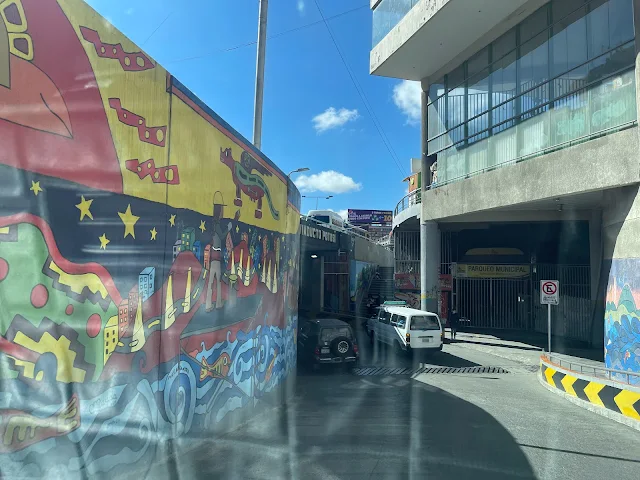

























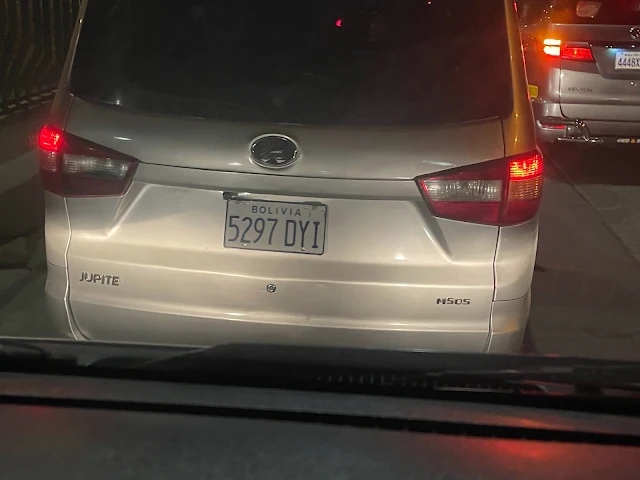
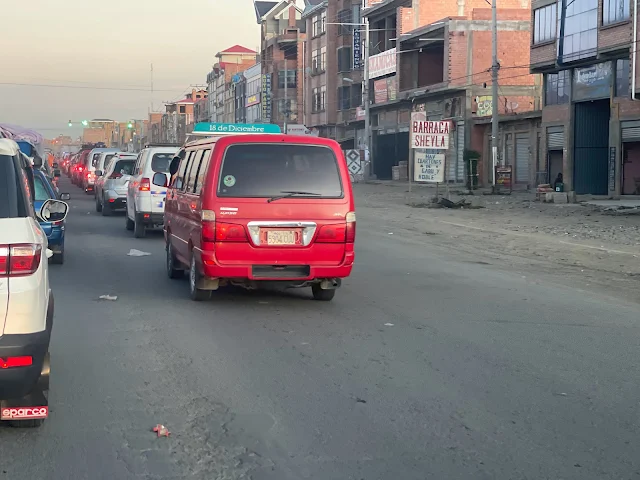







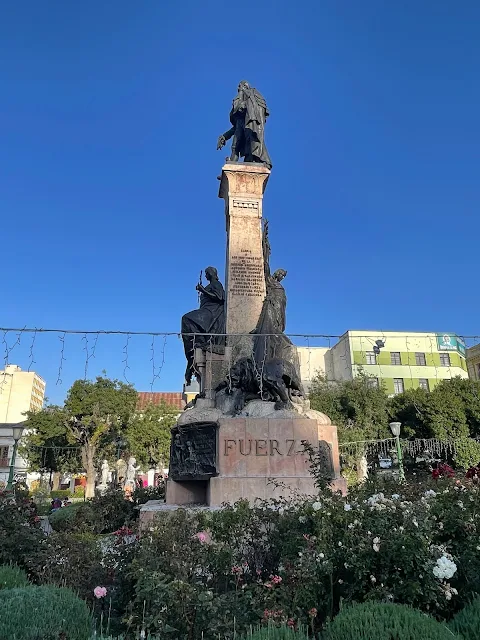





.JPG)












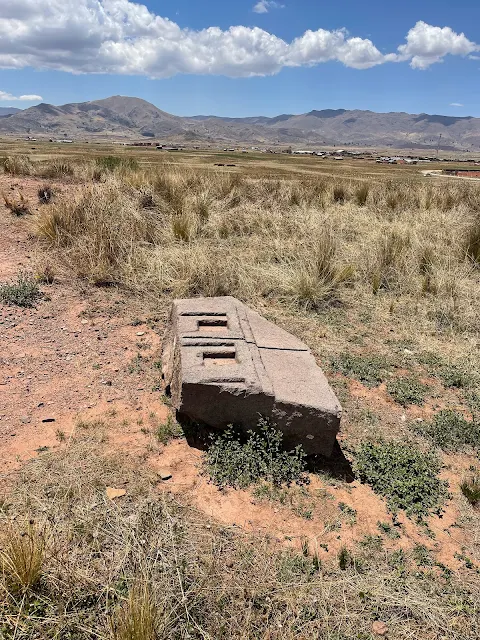











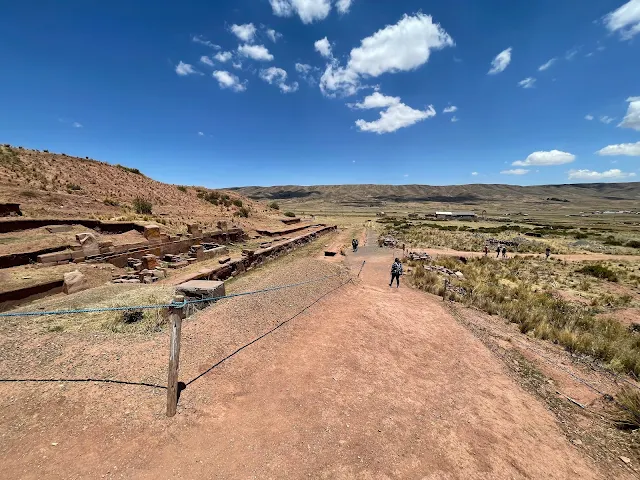







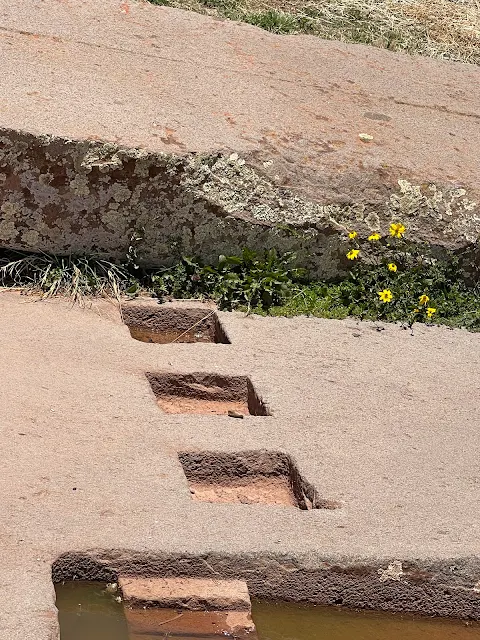



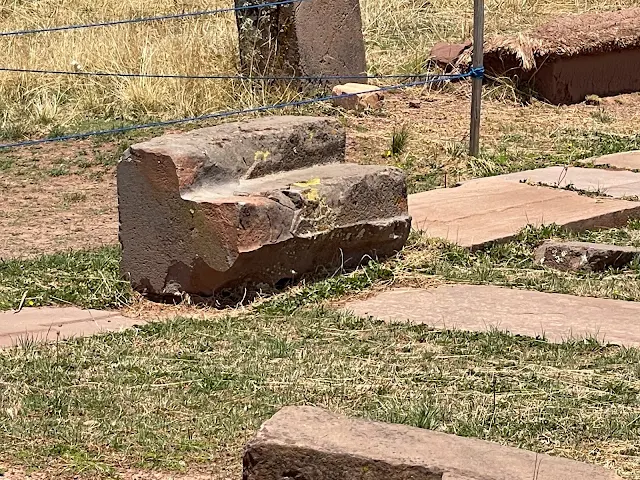





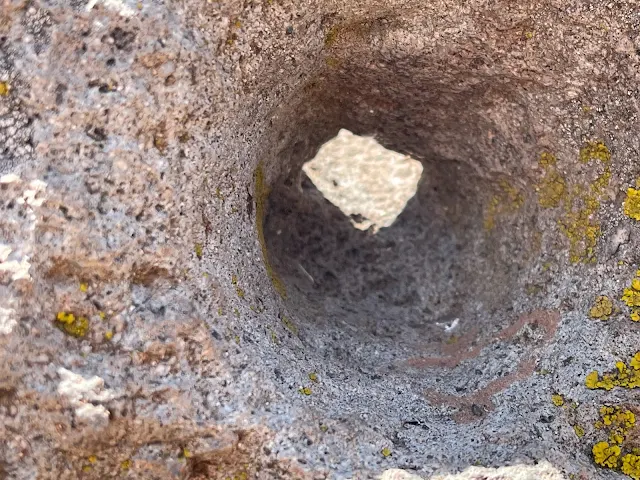





























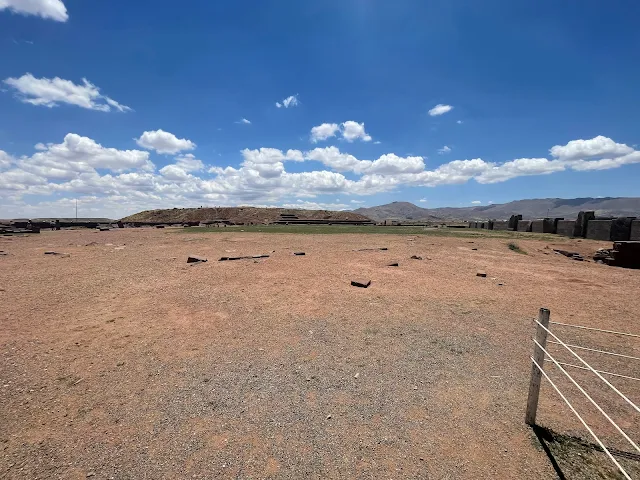








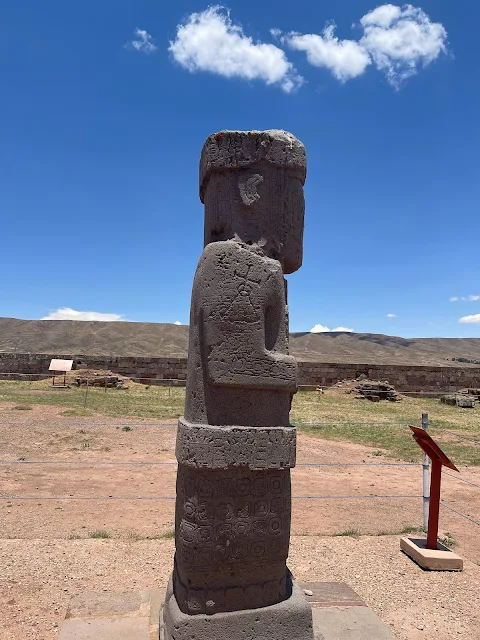
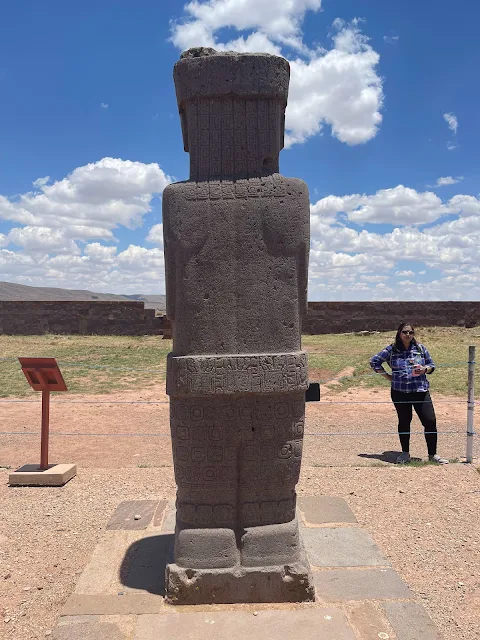




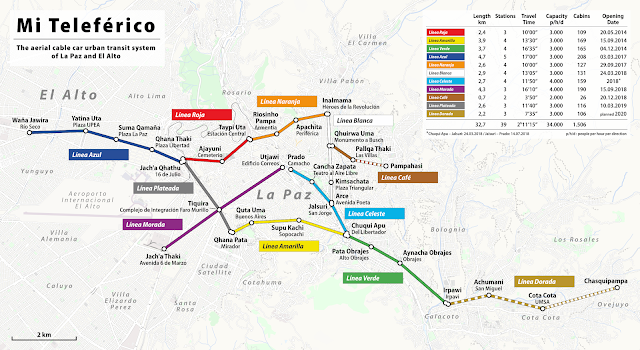













0 comments